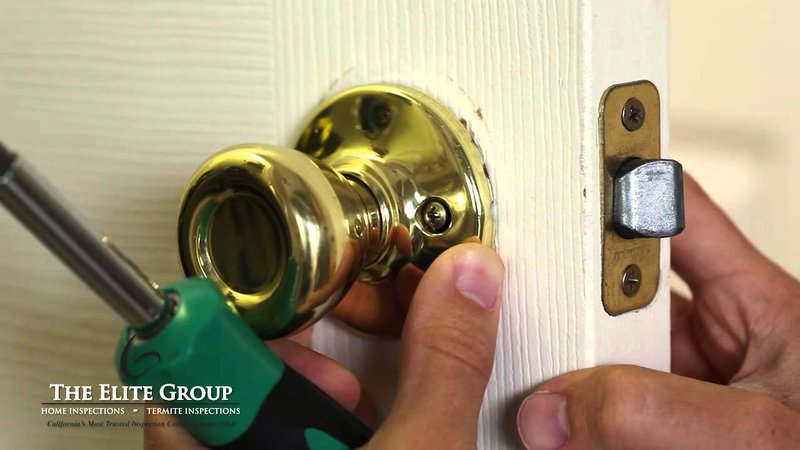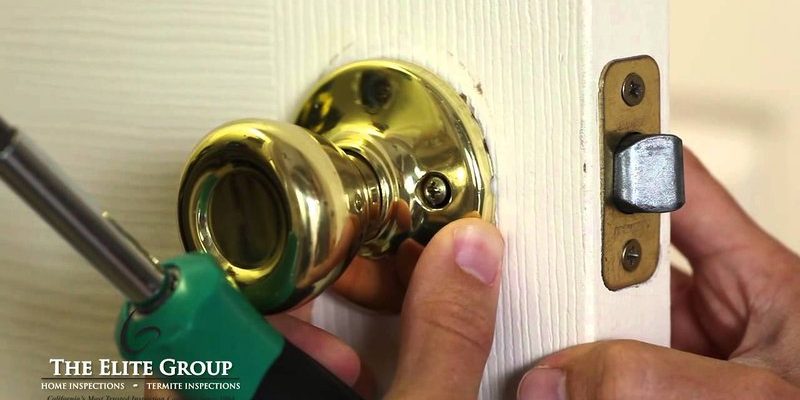
When your door latch is affected by foundation movement, it can feel like a minor inconvenience, but it can lead to bigger problems if left unattended. Think of your door latch like a friendly gatekeeper, ensuring only those who belong can enter. If that gatekeeper is struggling, you might end up locked out—or worse, in. This guide will walk you through the steps to fix that door latch and get it working smoothly again.
Understanding Foundation Movement
Foundation movement happens when the soil underneath your home shifts, expands, or contracts. This can be due to changes in moisture levels, temperature fluctuations, or even the weight of the house itself. Imagine standing on a boat that rocks gently in the water; your home does a similar dance with the land beneath it. Over time, this movement can cause walls to bow, floors to sag, or doors and windows to stick.
The latch on your door is just one part of the system affected by this movement. When your foundation shifts, the door frame can warp slightly, causing misalignment with the latch. It’s like trying to close a book that’s swollen from being in the rain; it just won’t fit right. Understanding this process is the first step in figuring out how to fix your door latch.
Signs Your Door Latch is Affected
So, how do you know if your door latch is impacted by foundation movement? There are several telltale signs to watch for.
- Door Sticking: If you have to shove or push to open or close the door, it’s time to investigate.
- Gap Changes: Look at the space between your door and the frame. If you notice irregular gaps, that’s a red flag.
- Latch Misalignment: The latch plate might not line up with the latch itself, making it hard to lock or unlock.
- Visible Damage: Cracks or splits in the door frame are clear indicators of structural issues.
If you’re noticing these signs, it’s not just annoying—it’s your home telling you something needs to be fixed. Ignoring these warning signs can lead to further damage down the line.
Tools You’ll Need
Before diving into the fix, gather the right tools. Having everything ready is like packing for a trip; the more prepared you are, the smoother the journey will be. Here’s what you’ll need:
- Screwdriver: A basic tool for adjusting screws and hinges.
- Wood Shims: Useful for leveling and adjusting door frames.
- Level: To check if your door and frame are aligned properly.
- Caulking or Wood Filler: For sealing any gaps or cracks.
- Hammer: Handy for driving in shims and adjusting components.
Having these tools on hand will help you fix the latch and address any underlying issues with your door frame, ensuring everything fits like a glove again.
Adjusting the Door Hinges
One of the first steps to take when fixing a door latch affected by foundation movement is adjusting the door hinges. This is often the simplest fix and can make a world of difference.
Start by inspecting the hinges. Look for screws that may be loose or damaged. If they are, tighten them up with your screwdriver. If the door is still sticking, you might need to shim the hinges. To do this:
1. Loosen the screws on the top hinge slightly.
2. Insert a wood shim behind the hinge to raise the door.
3. Tighten the screws again to hold the shim in place.
Think of this like propping up a table with a wonky leg; sometimes all it takes is a little lift to make everything balanced again. Once you do this, check the door alignment and see if the latch engages smoothly.
Realigning the Latch Plate
If adjusting the hinges doesn’t completely do the trick, it might be time to look at the latch plate. Sometimes, the latch plate can become misaligned due to the foundation shifting.
Here’s how to realign the latch plate:
1. Remove the screws holding the latch plate in place using your screwdriver.
2. Shift the plate slightly to either side until it lines up with the latch. Use your level to make sure it’s straight.
3. Reattach the plate by screwing it back in place.
Getting the latch plate aligned is essential because it’s the final touch for a properly working door. When the plate is where it should be, the latch should catch and release smoothly—no more wrestling with the door!
Using Shims to Level the Door Frame
In cases where the door frame itself has become uneven, using wood shims can help level things out. This process might sound intimidating, but it’s more straightforward than you’d think.
Follow these steps:
1. Identify the uneven areas by closing the door and observing where it sticks.
2. Insert shims at the base or top of the door frame where it feels off.
3. Tap the shims in gently with a hammer until the frame appears level.
Once you’ve done this, check the door’s operation again. Leveling the frame can often solve the latch issues and improve how well the door functions overall.
Sealing Gaps and Cracks
After you’ve made adjustments, it’s a good idea to seal any gaps or cracks that may have appeared around the door frame. Not only does this help with latch alignment, but it also improves energy efficiency and keeps pests out.
You can use:
- Caulk: Perfect for filling small cracks and gaps. It’s easy to apply and dries clear.
- Wood filler: Best for larger gaps, offering a smooth finish once it’s sanded down.
Simply apply the caulk or filler to the gaps, smooth it out, and let it dry before painting over it if needed. Sealing these areas can help prevent further shifts as the foundation continues to settle.
When to Call a Professional
Sometimes, DIY solutions aren’t enough, and that’s okay! If you’ve tried adjusting the hinges, realigning the latch, using shims, and sealing gaps, but still encounter issues, it might be time to call in a professional.
Look for a contractor or a handyman who specializes in door installations or foundation repairs. They can assess the situation more thoroughly and provide options that might be outside your expertise.
Remember, it’s always better to address these kinds of problems sooner rather than later. Just like your car, ignoring small issues can lead to more significant, more expensive repairs down the line.
In conclusion, fixing a door latch affected by foundation movement may seem daunting, but with the right tools and a little patience, you can tackle it. By understanding the problem, adjusting the hinges, realigning the latch plate, using shims, sealing gaps, and knowing when to seek help, you can ensure your door functions as it should. Plus, you’ll have the satisfaction of knowing you solved the problem yourself!
